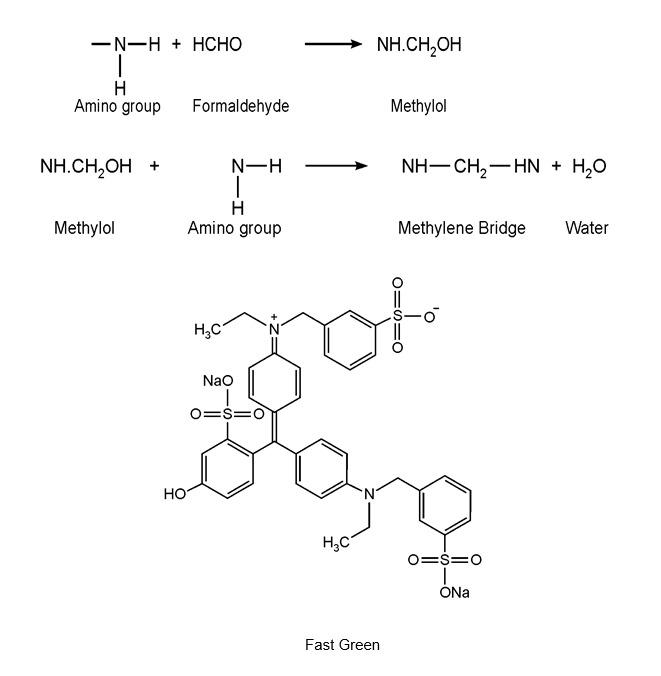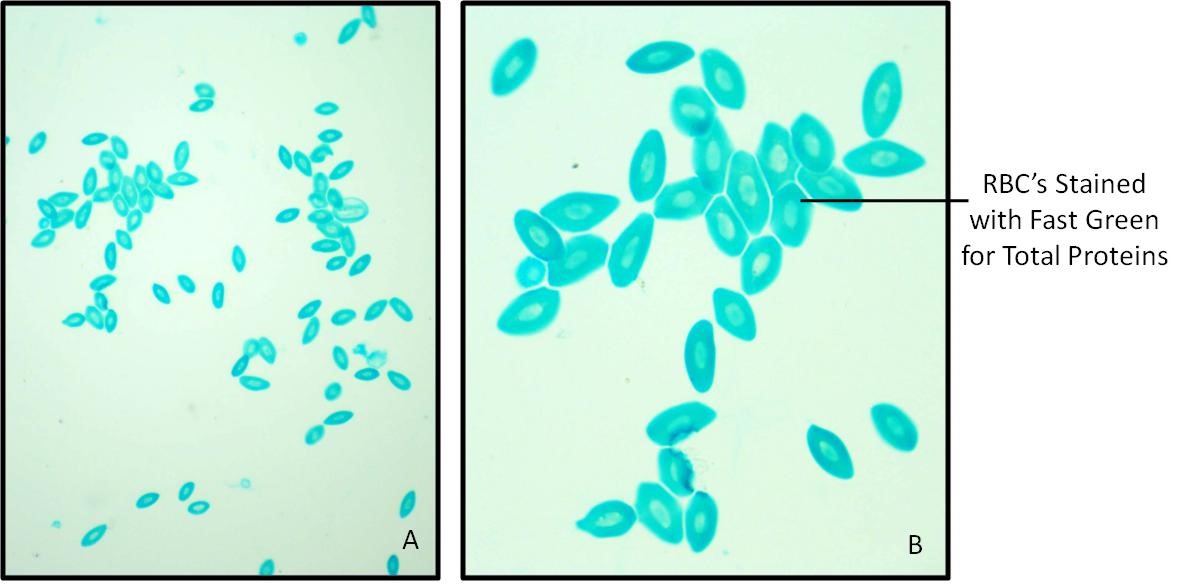

To cytochemically demonstrate the presence of total proteins in blood film of frog using Fast Green FCF (at pH 2.4).
Protein solutions are amphoteric i.e. they can act as acids or bases depending upon the pH of the solution. A protein molecule at its isoelectric point has a net charge of zero due to the balance of positive and negative charges between the dissociated basic and acidic groups of the constituent amino acids. In this state of dissociation, the protein molecule exists as a zwitterion. The basic group having +ve charge in amino acid is mostly NH4+ group present in lysine, histidine and arginine. The acidic carboxyl groups of glutamic acid and acidic hydroxyl group of tyrosine and serine are primarily responsible for giving proteins their –ve charge.
The influence of pH on the dissociation of free basic and acidic groups of amino acids is shown by the addition of acid or base to a protein solution at its isoelectric point. Every protein has a specific isoelectric point known as pI. At this point + and – ions are equal. The total charge is 0. It is a general property of proteins that when they are exposed to pH which is below their pI then the amino groups of the protein dissociate i.e. it picks up a proton and becomes positively charged whereas if the proton is exposed to a pH above the pI then the carboxyl group dissociates losing a proton and the protein molecule become negatively charged.
The pI for total proteins is between 3- 4. In this staining experiment the stain is prepared at pH 2.4, which is below the pI for total proteins. So the proteins become positively charged and bind with the negatively charged acid dye Fast green. Histones of cell nuclei are not stained by this method as their basic side groups are blocked by the phosphate groups of DNA.
Formaldehyde fixed material is used because it is a good fixative for proteins producing certain cross-linkages with the protein molecule so that the proteins are preserved in form similar to as they were in living conditions.
Formaldehyde fixed material is used because it is a good fixative for proteins producing certain cross-linkages with the protein molecule so that the proteins are preserved in form similar to as they were in living conditions.
Following steps are involved in fixation of proteins by HCHO:
1. HCHO combines with the amino group of the protein forming an intermediate compound known as methylol.
2. Methylol further reacts with another amino group of a protein and releases a molecule of water and forms a crossing link or methylene bridge between two protein chains, therefore the proteins are chemically preserved within the cell.

Step 1:Smear Preparation
Frog RBC
Frog RBC nuclei stain light green and cytoplasm darker green for presence of total proteins.
 Fig.: Frog Blood cells showing presence of Total Proteins stained with Fast Green at pH 2.4.
Fig.: Frog Blood cells showing presence of Total Proteins stained with Fast Green at pH 2.4.
A. 100 X B. 400 X
(i) All the steps involved must be performed carefully and systematically.
(ii) The slides must be handled only from the marked end.
(iii) Fast Green FCF should be at pH 2.4.,
(iv) The slides should not be upgraded as Fast green is soluble in alcohol.